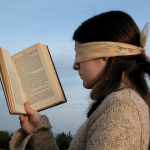Module 1
Universal Design for Learning (UDL) is the strategic approach to planning engaging learning experiences that ensure that learners efficiently gain the right knowledge and skills regardless of learner variability. The three guiding principles revolve around providing multiple means of:
- gaining and maintaining learner engagement
- representing information and portraying knowledge
- optimizing physical action and expression options
UDL Defined: Click on the image below for a brief audio clip.
Objectives
At the conclusion of this module, you will be able to:
- Define and describe Universal Design for Learning
- Describe examples of each of the three principles
- Demonstrate how to develop accessible content
Universal Design v. Universal Design for Learning
The theory behind Universal Design for Learning (UDL) actually comes from Universal Design for architecture. This philosophy about “universal design” is to provide access for all during up-front planning. Let’s begin by taking a look at the wider picture – at Universal Design which applies to products, buildings, and environments, and then narrow the lens to Universal Design for Learning (UDL) which focuses on making instruction accessible to all from the planning stages.
The following video and section introduces “Universal Design” and its principles. It is all about accessibility from the start:
Universal Design began in the field of architecture and applies not only to architecture, but many manufactured products. The information below shares the seven principles of Universal Design and give several examples of Universal Design in buildings or products around our own ECU Main campus. If architects and those who do product design take into consideration each of the following principles during their planning stages, then what they create is a very inclusive building/product that everyone can use.
7 Principles of Universal Design
- Equitable Use
- Flexible use The first two principles allow for users of varying abilities. Think about automatic doors, curb cuts, ramps and scissors that were designed for left or right-handed users. As you walk around ECU’s campus, you will see the curb cuts when crossing the road at the end of the sidewalk. There are also many automatic doors at the entrances of buildings. Consider the front entrance to Joyner Library which has a big round ramp that curves to the steps in the front of the building — it is both aesthetically pleasing and useful for individuals of varying abilities and needs.
- Simple and Intuitive Use Addresses things like public emergency stations that utilize recognized emergency colors (e.g. blue) and a simple design for quick and easy function. Consider the Emergency Blue-Light Phones which are located across ECU’s campus.
- Perceptible Information. Allows for sensory input on design elements. Consider design elements like the small bumps on a keyboard at letters J and F which tell the user where important keys are without requiring the user to look at the keys.
- Tolerance for Error This addresses anything on a product that can warn the user of consequences and hopefully prevent accidents. Think of candle lighters that require two finger motions in order to activate them
- Low Physical Effort – Notice the door levers around campus do not require grip or strength to operate and can even be operated with an elbow or closed fist. Most of the doors have bars that you can easily push to open.
- Size and Space – Wide gates at the airport or subway stations accommodate all users whether using a wheelchair, carrying a briefcase, or pushing a stroller.
Those seven principles are aligned with Universal Design — for architecture and product design. The overriding idea is to make environments and products as accessible as possible from the start of the design process so that the widest variety of people will be able to use the environment and/or product without modifications being made. Pretty cool concept!!
And that ideology was applied to education by CAST as a framework for designing educational experiences and became Universal Design for Learning.
Explore the CAST website by clicking on the logo above.
Let’s think about those principles as we apply them to Higher Education and look at Universal Design for Learning.
What is Universal Design for Learning [UDL]?
- It is a framework for building lessons (up-front planning!) that provide access, participation, and learning for all students.
- It also increases flexibility, collaboration, and differentiated instruction – often through technology – although technology is not necessary.
Done well, UDL helps to reduce unnecessary barriers, encourages proactive design, offers flexible options for demonstration of learning mastery, and assumes learner variability – which should be considered proactively in advance of curriculum design and course planning.
What are the three Universal Design for Learning [UDL] principles?
- Representation: how information is presented
- Engagement: how students interact with the material
- Action/Expression: how students show what they have learned
Take a few moments to consider your past experiences as an instructor or student experiences— What are instructional practices that you have used/experienced that align with each of these principles? How has information/content been presented by/to you? How have you or other teachers/professors engaged students in classes? How has mastery of content been assessed?
 Video Instruction
Video Instruction
Watch the following video to gain an understanding of Universal Design for Learning.
The Myth of Average
This video by Todd Rose can help us think about the importance of proactively designing for the diverse learning profiles our students bring to the classroom.
Universal Design for LEARNING: Traditional and Digital Methods in Educational Settings
Some of the Traditional Methods commonly used for the three principles:
Representation: Getting information from a textbook, PowerPoint, lectures, videos.
Engagement: Interacting with the material by completing group work, graphic organizers, role playing, etc.
Action/Expression: Showing what you’ve learned through individualized or collaborative assessments, papers, tests, projects, etc.
Consider instructional technology that is increasingly prevalent in today’s classrooms. With the 21st Century shift, use of personal technology has become mainstream. If we enjoy using these digital resources in personal lives and free time, why not use them for courses?
With 21st century learners, we would like to hope that you are seeing more digital methods of instruction embedded in the classroom. Here are a few Digital Methods that incorporate the one or more of the UDL principles: the use of presentation platforms like Prezi; assessment platforms like Kahoot; integration of Social Media Platforms; and a variety of Apps, some available within Canvas
Accessibility
As defined by the Office of Civil Rights, ‘accessible’ means that a person with a disability is afforded the opportunity to independently acquire the same information, engage in the same interactions, and enjoy the same services as a person without a disability in an equally effective and equally integrated manner, with substantially equivalent ease of use.
How does UDL work in relation to learners with disabilities?
The primary aim of Universal Design for Learning (and Universal Design) is to help all individuals be more successful in their coursework. By incorporating UDL principles into course design, accessibility is increased automatically. When you use instructional materials that are already set up for diverse (or marginalized) learners, all the learner needs to do is customize settings to utilize the options for what they need individually.
Consider a simple example of using Microsoft Word for documents (content, directions, etc.). Formatting options are already built in so that the student can increase font size, font type, or change contrast with ease through the click of the mouse in order to personalize settings for their individualized needs or preferences.
Easy changes to fonts, font size, spacing, and color contrast.
Simple Fixes to Enhance Accessibility ….. not only for Individuals with Disabilities, but for everyone!
While most technology products being developed today are being universally designed in their planning stages, there will will be times when a student/individual with a disability may need additional support.
Blind/Low Vision – Add Image Description when adding any pictures, screenshots or graphics. Canvas is already set up to prompt course designers for a description of the image being posted.
Deaf/Hard of Hearing or Auditory Processing Disorders – Add captioning to all course made videos via Canvas Studio. Be sure any embedded videos have accurate captioning or provide a transcript.
- Formatting Documents for Screen Readers – Microsoft Accessibility
- Example of UDL – Representation using H5P – Dialog Cards
 Resources
Resources
CAST is the most extensive repository for Universal Design for Learning resources.
Take a moment to review the following specific pages for a more complete understanding of UDL and to help put these resources into context.
Universal Design for Learning Guidelines
Remote and Online Environments
CAST Resources by Principle



- CAST: Engagement
- Watch: How to keep your students motivated (11min)
- CAST: Representation
- Watch: Multiple Means of Representation (<1 min)
ECU Created Canvas Resources built on UDL principles
Important: Before using these resources, you must be first logged into Canvas, and then open a Canvas Commons window.
- The UDL Canvas Course Wizard – Install a customized Canvas template with UDL & Quality Matters components
- Podcast-in-a-box – Augment an essay assignment with a Podcast in less than 5 clicks
- Infographic-in-a-box – Everything you need to include an infographic assignment, even if you’ve never done it yourself!
- External Resources for Teaching Online – ECU Office of Faculty Excellence
Other Resources
- Content Creation – http://floeproject.org/
- 3 play – 10 tips http://www.3playmedia.com/resources/webinars/online-courses-10-08-2015/
- POUR – http://aem.cast.org/creating/best-practices-educators-instructors.html#WihnhlWnFEY
